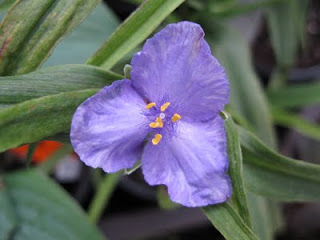Their names are many. There’s spiderwort, barrenwort, masterwort, St. John’s wort and others – almost 200 in all.
“Wort” stems from from the Old English word “wyrt,” which means plant, herb or root. It hasn’t been widely used since the mid-17th century, so any plant with a common name ending in “wort” has been recognized as being worthy of cultivation for a very, very long time.
 |
| Masterwort (Astrantia major 'Roma') |
Spiderwort, for example, was thought to treat spider bites.
Barrenwort supposedly would prevent pregnancy.
Lungwort was reputed to help lung problems because its silver spotted leaves were thought to look like a lung.
And masterwort? Well, according to Monrovia’s ye olde website, it was recommended to treat "the bite of a rabid dog"!
While time – and medicine – have marched on, these plants have endured because their ornamental qualities. Barrenwort (epimedium rubrum) and lungwort (pulmonaria) are both good in dry shade, always a difficult situation for gardeners
Barrenwort has wonderful heart-shaped leaves that are topped with dainty flowers on wiry stems. Make no mistake, however. It’s as hardy as they come. Ditto for lungwort, which now has pink and rose-colored flowers in addition to the original blue.
 |
| Barrenwort (Epimedium rubrum) |
Ironically, spiderwort (tradescantia virginiana) is being touted nowadays for a health problem other than spider bites. According to preliminary studies, its blue stamens turn pink when exposed to nuclear radiation or chemical pollution. It’s all the rage on survivalist websites.
 |
| Spiderwort (Tradescantia virginiana) |
St. John’s wort, of course, has long been thought to help with depression. If you want to grow it because of its nice yellow flowers, however, make sure you get the “Hidcote” shrub version. The actual herb, hypericum perforatum, is classified as an invasive plant by both Wisconsin and Michigan.
All of these plants are time-tested, to say the least, and very worthy of consideration when you’re planning a garden. Or maybe that should that be “wort”-hy…
What's your favorite "wort"?
By Karen Geisler

1 comment:
I love worts! Determined to plant more perennials, I purchased some bulbs last fall and planted spiderwort, having never grown it before. I like its sprawling, lanky look, and the flowers were most ethereal. Now it has clusters of little pod things on it. I may try some others worts! Thanks for the good post!
Post a Comment